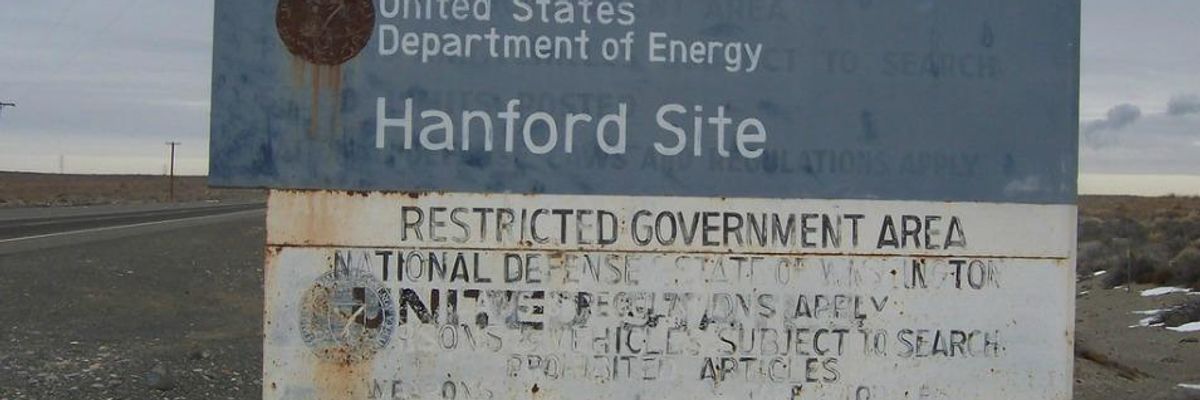A tunnel used to store highly radioactively contaminated waste at the Hanford Nuclear Reservation in southeast Washington state collapsed Tuesday, leading to a declaration of emergency.
According to the Washington state Department of Ecology, officials have not detected a release of radiation and no workers were injured. Radiological surveys are continuing.
The Tri-City Herald reports that following the breach, which was discovered early Tuesday morning, "several thousand workers at the Hanford nuclear reservation were told to take shelter in buildings." An emergency was declared just before 8:30am local time.
The paper continued:
An aerial survey mid-morning Tuesday showed an opening about 20 feet by 20 feet into one of two tunnels, which had been covered with about eight feet of soil.
The breach at the defunct PUREX processing plant tunnel could expose the highly radioactive material in the tunnel to the atmosphere.
Local NBC affiliate station KING 5 reported: "A manager sent a message to all personnel telling them to 'secure ventilation in your building' and 'refrain from eating or drinking'."
KING 5 reporter Susannah Frame said the watchdog group Hanford Challenge had called the situation "a crisis."
According to the Spokesman-Review:
PUREX was built in the 1950s and operated from 1956 to 1972 and again from 1983 to 1988. About 70,000 tons of uranium fuel rods were processed at the plant.
Railcars full of highly contaminated materials and equipment from the plant were backed into waste disposal tunnels at the plant and left there as a disposal method. The material was so radioactive that several empty cars were placed between the railcar holding waste and the locomotive to protect the driver from radiation.
The tunnel walls are 14 inches thick and held up by pressure-treated Douglas fir timbers arranged side by side, according to the Washington Post. The walls rest on reinforced concrete footings.
U.S. Department of Energy Secretary Rick Perry, who at one point admitted he didn't know that oversight of the country's nuclear facilities fell under his agency's purview, has reportedly been briefed on the situation.
Just over one year ago, a leak at the site prompted warnings of "catastrophic" consequences, as Common Dreams reported at the time.
On Tuesday, Kevin Kamps, of Beyond Nuclear put the most recent accident in a larger context. "The current unfolding crisis at Hanford, the bursting barrel at Waste Isolation Pilot Plant (WIPP) in New Mexico in 2014, and the exploding radioactive waste dump in Beatty, Nevada in 2015, show that radioactive waste management is out of control," he said.
Looking forward to other troubling projects in the works, he added: "That's why the Yucca Mountain dump in Nevada, the Canadian dump targeted at the Great Lakes shore, and the parking lot dumps in Texas and New Mexico must be blocked, to prevent future disasters."

